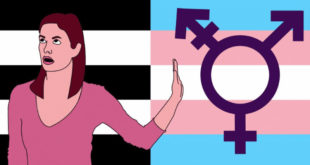This racist smog is not the hero we deserve, but the hero we need.
Americans are breathing in a lot more wildfire smoke today than they did 10 years ago, new research confirms. And places with more people of color, immigrant communities, and areas where there’s lower educational attainment and more crowded housing have it the worst.
In short, already disadvantaged communities are bearing the brunt of growing health risks from wildfire smoke in the US. That’s something to keep in mind this week after wildfire smoke smashed air pollution records across the US.
More than 87 percent of the US population saw an increase in the number of days of heavy wildfire smoke they experienced between 2011 and 2021, according to a study published this week in the American Journal of Public Health. Zoom in on the last five years, and the numbers are eye-popping. Between 2017 and 2021, on average, Americans experienced a 350 percent rise in exposure to heavy wildfire smoke.
While it’s a widespread problem, some groups were especially hard-hit. Communities with more people of color and limited English proficiency saw a whopping 449 percent increase in their exposure to the heaviest smoke plumes. Overall, groups that are marginalized due to race, language, educational attainment, and housing experienced a 358 percent increase in exposure.
The researchers combined satellite data on smoke plumes with census data on population density and socioeconomic characteristics of the communities exposed. Their study calculates “person-days” of smoke, a measure of the magnitude of a population’s exposure to smoke. It’s based on the number of people in a given area and the number of days that group had to cope with wildfire smoke.
The study doesn’t focus on why the disparities it found exist. But marginalized communities are often on the front lines of climate change when it comes to living in places facing the greatest rise in temperatures and sea levels.
…
The same communities burdened with the most smoke can also face disadvantages when it comes to finding ways to protect themselves from it. Lower-income households might not have air purifiers, for instance. And warnings about air quality aren’t always translated into all of the languages people speak in a community — a problem officials could tackle by providing information in languages other than English.
“We need to really be considering who is getting the brunt of [wildfire smoke] and what makes the most sense to reach those populations so that we can adequately protect them,” Conlon says.
Note that CNN presented this story as news, rather than an opinion piece.
It’s quite incredible.
 Daily Stormer The Most Censored Publication in History
Daily Stormer The Most Censored Publication in History


